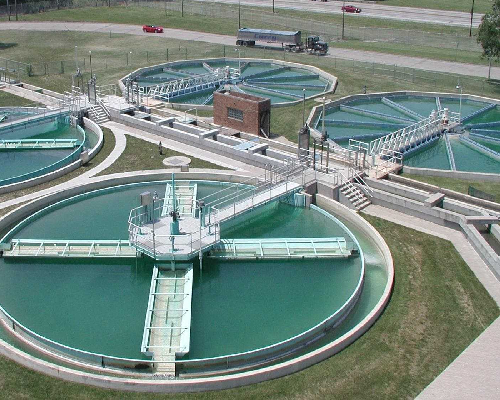Wastewater Treatment Plant Manufacturer
Enbio Green Solutions Pvt Ltd
Wastewater treatment is the process of removing contaminated substances from water and converting it into an effluent that will not harm the environment and maintain the purity of water bodies. Wastewater discharged from factories and laboratories is a pressing matter, it essentially impacts the bodies of water like rivers, ponds, and lakes and makes them polluted and unfit for drinking and aquatic animals suffer on it’s account too. Treatment may consist of chemical, biological, or physical processes or a combination thereof. Water may be treated to any level of quality desired. Waste water consists of many pollutants like bacteria, chemicals and other toxic substances. There are two wastewater treatment plants namely chemical or physical treatment plants, and biological wastewater treatment plants.
Biological wastewater treatment uses biological substances like bacteria (aerobically or anaerobically), algae, and fungi (aerobically) and breaks down the waste matter into simpler substances. Physical waste treatment plants use chemical reactions as well as physical processes to treat wastewater.
Biological treatment is ideal for waste discharged from households and business offices. Physical treatment is more suitable for the large amount of wastewater discharged by manufacturing units, factories, mills etc.
Biological wastewater treatment uses biological substances like bacteria (aerobically or anaerobically), algae, and fungi (aerobically) and breaks down the waste matter into simpler substances. Physical waste treatment plants use chemical reactions as well as physical processes to treat wastewater.
Biological treatment is ideal for waste discharged from households and business offices. Physical treatment is more suitable for the large amount of wastewater discharged by manufacturing units, factories, mills etc.




Effluent Treatment Plant (ETP)
Process must be as efficient as possible to meet environmental regulations. To ensure the proper operation of ETP, several steps should be taken to ensure its smooth operation. We offers a complete package of solutions to address the problems associated with ETPs. Our team of experts has Ten years of experience in wastewater treatment and works closely with customers to understand their needs and requirements and design a customised solution.
An ETP plant is a highly effective wastewater treatment system. It can remove organic, inorganic, and hazardous materials, and it can also treat water containing high suspended solids, heavy metals, and other harmful substances. The main purpose of an ETP plant is to prevent the release of contaminated water into the environment, thereby preventing its harmful effects. A well-designed ETP plant will minimize the amount of contamination released into the environment.
TYPES OF ETP
- 1. CETP
- 2.ETP ZLD
Sewage Treatment Plant (STP)
A Sewage Treatment Plant is a facility that cleans and processes sewage. It flows through screens and into settlement basins to sluice out the trash and debris that would otherwise cause a significant amount of damage to the equipment. This can cause excessive wear to the equipment and reduce its life. This process will ensure that wastewater is not contaminated with harmful bacteria, viruses, and other materials. Here are some things you need to know about STP.
Secondary treatment involves mixing raw and processed sewage, creating a homogenous solution. This mixture is mixed with oxygen to break down organic matter and remove pathogens. The balancing tank is sized to handle a full six to eight hours of sewage. A blending system is also commonly used to ensure that the wastewater is homogeneous and free of microbial growth. In addition, an aeration plant must include a filtration system.
TYPES OF STP
- 1.SBR STP
- 2.MBBR STP
- 3.MBR STP






